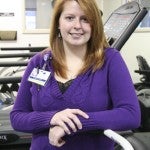Heart failure and exercise
Published 7:10 pm Friday, February 5, 2016
February is American Heart Month, which brings awareness to the fact that coronary heart disease is the No. 1 killer in the nation of both men and women. President Obama wrote in 2015, “During American Heart Month … let us recommit to improving our heart health and continuing the fight against this deadly disease, for ourselves and our families.”
While the focus is usually on coronary heart disease, heart failure is another type of heart disease, and there are currently about 5.7 million Americans living with it today. It results in more than 1,600 deaths annually in North Carolina alone.
Heart failure is a condition that causes the muscle in the wall of the heart to slowly weaken and enlarge over time. This prevents the heart from filling properly and pumping enough blood. As a result, blood backs up in the veins and fluid can build in your body, causing swelling in your feet, ankles and legs. Fluid also can build up in the lungs. The body does not get enough blood, robbing it of nutrients and oxygen. The most common cause of heart failure is coronary heart disease, which occurs when the arteries that supply nutrient-rich blood to the heart become narrowed and/or blocked by fatty deposits called plaque. Other common risk factors that can lead to heart failure are a past heart attack that damaged the heart muscle, uncontrolled high blood pressure, heart valve disease, abnormal heart rhythm, obesity, diabetes and alcohol or drug abuse.
Heart failure usually takes years to develop, gradually worsens if untreated and usually progresses for some time before it’s diagnosed. Signs of heart failure include shortness of breath (especially when lying down), feeling tired and run-down, coughing or wheezing (especially when exercising or lying down), swelling in feet, ankles and legs, weight gain from fluid buildup and confusion/trouble thinking clearly. Heart failure is treated by medication prescribed by a doctor to strengthen your heart and water pills to get rid of excess fluid. A diet low in sodium (salt) and fat is also recommended, as well as other lifestyle changes, such as losing/maintaining weight, quitting smoking, avoiding alcohol and caffeine and being physically active.
Being physically active for the heart failure patient can be tricky because often one feels short of breath and tired before or soon after beginning any type of activity, including simple household chores or bathing and getting dressed. However, research has shown that physical activity can be greatly beneficial to the heart failure patient. Current research suggests that moderate exercise is generally safe and results in improvements in quality of life, balance, exercise tolerance and muscle function. Moderate exercise can be described as activity that slightly increases heart rate and rate of breathing, while still maintaining the ability to talk comfortably. The American Heart Association suggests participating in a structured rehabilitation program, such as cardiac rehabilitation, or starting an exercise program with the permission of their healthcare provider. Short bouts of activity interspersed with bouts of rest are recommended by the American College Sports Medicine, especially initially. It is imperative that heart failure patients progress at their own pace and increase their duration at their own tolerance based on their symptoms of shortness of breath and fatigue. It is very common for the heart failure patient to feel more fatigued or short of breath on some days, and it would be best to decrease the amount of activity or rest when symptoms are severe. Heart failure patients are encouraged to continue to increase their duration as tolerated, until they are able to tolerate one bout of activity for 30 minutes or more.
If you or a loved one is told you have heart failure, be encouraged! While heart failure is a chronic condition, it is not a death sentence. You can learn to manage your symptoms and live a full and enjoyable life. Follow your doctor’s instructions, especially regarding your medications and monitoring your fluid status (change in weight/swelling). Ask your doctor about an appropriate exercise program near you. Enlisting the help of an exercise specialist who can guide you through a safe and effective exercise program will help you manage your symptoms and improve your overall quality of life.
Meagan Overman, MS, CCEP, is a clinical exercise physiologist at Vidant Beaufort Cardiovascular Rehabilitation in Washington and can be reached at 252-975-4236.






